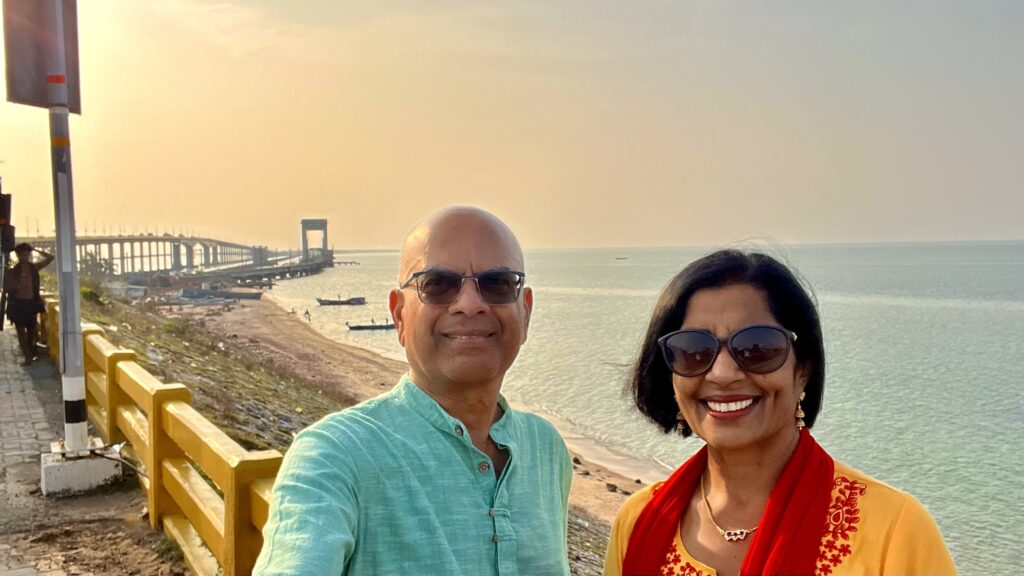Day trip from Kanadukathan
After an early and hearty breakfast, we set off for Rameshwaram which is about 155 km from Kanadukathan and located on Pamban Island separated from mainland India by the Pamban bridge. We were planning to see the following places:
- Rameshwaram Temple
- Abdul Kalam house
- Danushkode
- Abdul Kalam Museum
- Pamban Bridge
Rameshwaram temple – It took us close to 3 hours to reach the temple. The temple is an architectural marvel with imposing towers, intricate sculptural works and long corridors. The main deity worshipped in the temple is Shiva, in the form of lingam. The current form of the temple was built in the 17th century, although some parts of the temple are over 1000 years old as the original temple was constructed in 12th century.
The temple was built on the site where the god Rama is said to have left his footprints while crossing the island to rescue his wife Sita. It was built by rulers over many centuries, including the Pandya dynasty, the Nayak rulers, and other regional kings. The temple is one of the twelve Jyotirlinga(Pillar of light) temples and is also one of the four Char Dham pilgrimage sites, which are considered holy places for Hindus.
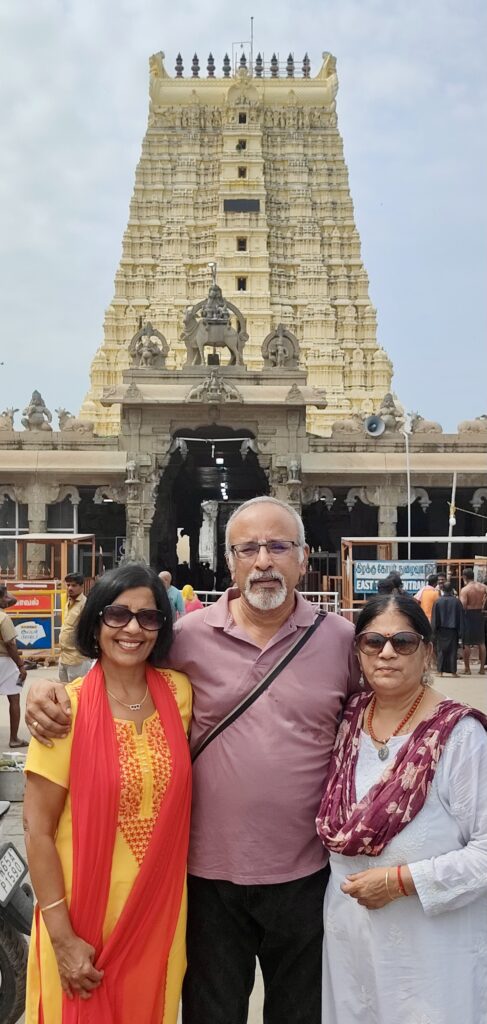

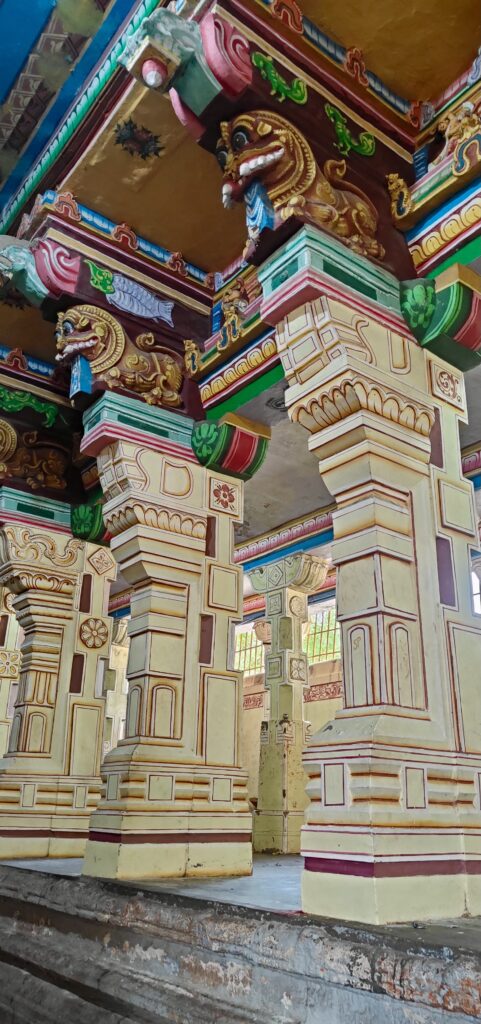
Corridors of Rameshwaram temple – The temple has a series of corridors that are considered to be the longest in the world. The corridors are a marvel of ancient Indian architecture, featuring intricate carvings and a symmetrical design. The outer set of corridors is about 400 feet long in the east and west, and about 640 feet long in the north and south. The corridors are supported by 1,212 sandstone pillars, each 30 feet tall. Many of the pillars are decorated with ornate carvings. The corridors is about 22.6 feet high and 17-21 feet wide.
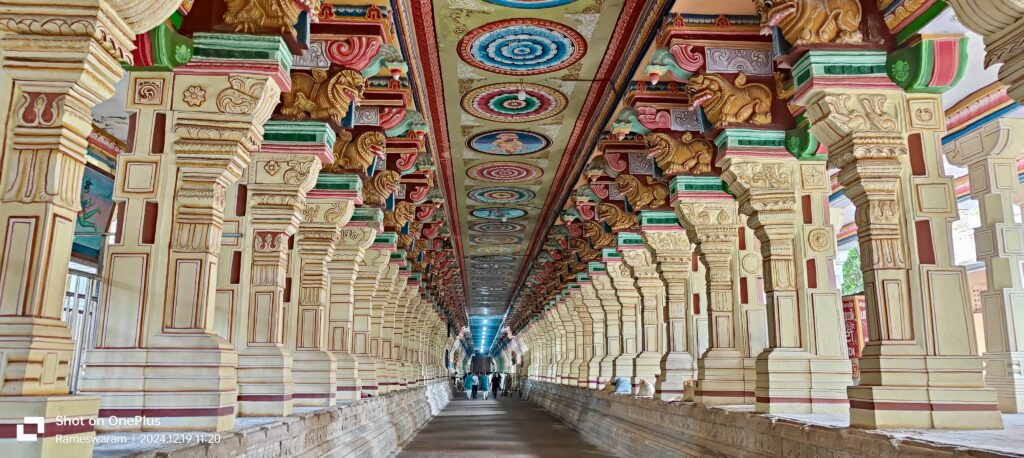
- The driver dropped us near the East entrance to the temple and we left our foot ware in the car.
- Dress conservatively, cover your shoulders and legs
- The temple was not too crowded on the day we visited (Dec 2024). We paid Rs 50 to skip the long line and get darshan faster which we did.
- We were allowed to take pictures of the corridors but not beyond.
Abdul Kalam house – After visiting the temple, we stopped briefly to see Abdul Kalam’s house which was a 5 min drive from the temple. Abdul Kalam (1931 – 2015) was an Indian aerospace scientist and statesman who served as the president of India from 2002 to 2007. He was born and raised in a Muslim family in Rameshwaram. He was widely referred to as the “People’s President”.
His house where he was born and raised in Rameshwaram is free to visit. It is now a museum that displays several pictures, certificates, Doctorates, honors and awards right from his childhood to his scholarly works. The building is a two story building, which is maintained by his elder brother. You have to remove your shoes to visit the inside and photography is not allowed inside.
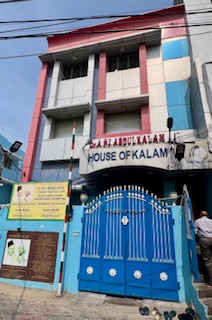
Danushkodi – is a small coastal village on Pamban Island off the coast of Tamil Nadu. It is located at the southernmost tip of the Indian peninsula, at the confluence of the Bay of Bengal, the Indian Ocean, and the Arabian Sea. Danushkodi was devastated by a cyclone in 1964, which killed thousands of people and destroyed most of the village.
Today, Danushkodi is a popular tourist destination and attracts visitors from around the world who come to enjoy its scenic beauty, serene beaches, and its history. A new road that was opened in 2017 has made Danushkodi much more accessible. Before it was constructed, the only way to reach the town was to take a private mini bus or jeep across the sand, or walk along the seashore.
We drove to Danushkodi from Rameshwaram, a 40 minutes scenic drive along the water. We stopped on the way at a few places.
Kothandaramaswamy Temple – Located 13km from Rameshwaram and on the way to Danushkodi, this temple is dedicated to the Hindu god Rama. The temple is the only historical structure to survive the 1964 cyclone that washed away Danushkodi. The temple also has the sculptures of Lakshmana, Sita, Hanuman, and Vibhishana. The temple is surrounded by sea and remains a tourist attraction. The temple was not crowded and the line to the shrine was short.
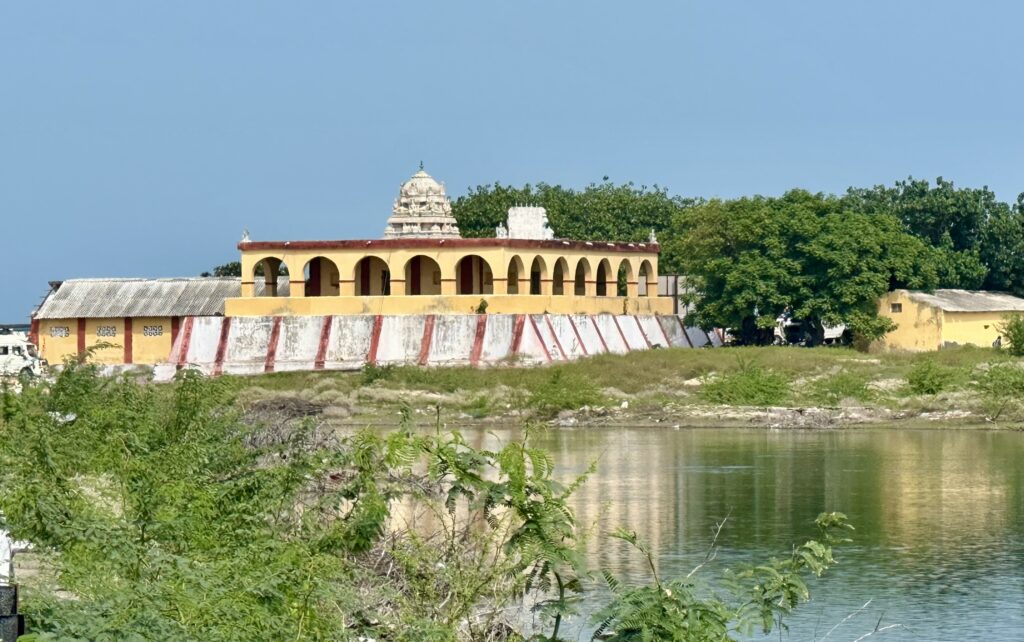
St. Antony’s Church ruins – You can see remnants of the abandoned church from the main road. The driver stopped the car at the side the road. There is a well laid out wooden path on either side of the church. The church was built from coral stone, the red color can be seen under all the arches. Locals and many tourists have been urging the government to rebuild the church.

Danushkodi Lighthouse – This lighthouse is on the opposite side of the road from the Church ruins. You can take an elevator to the top of this lighthouse to get a 360 degree view of the surrounding. It is closed on Mondays, Open on all other days : 10am-1pm, 2:30pm-5pm.
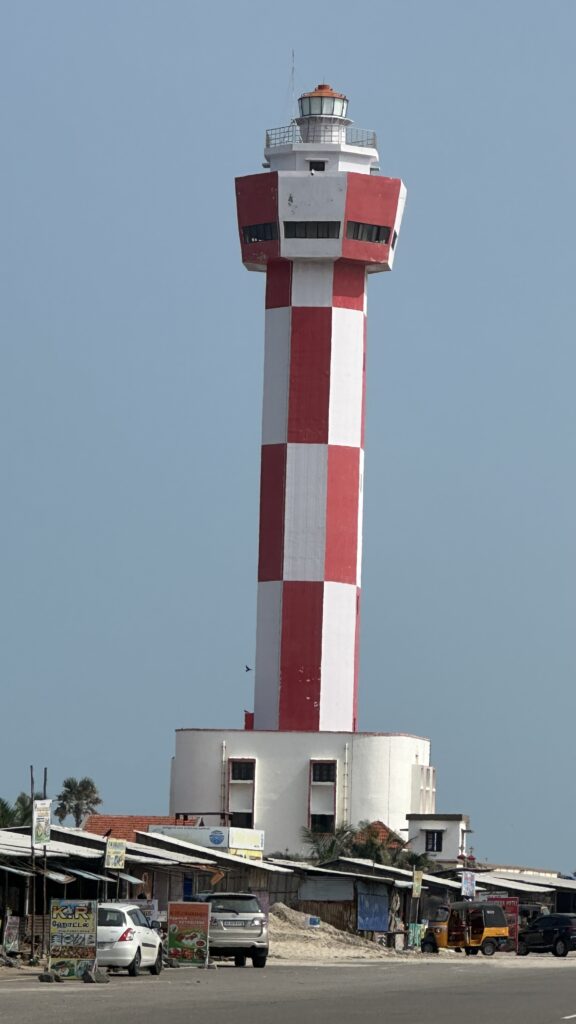
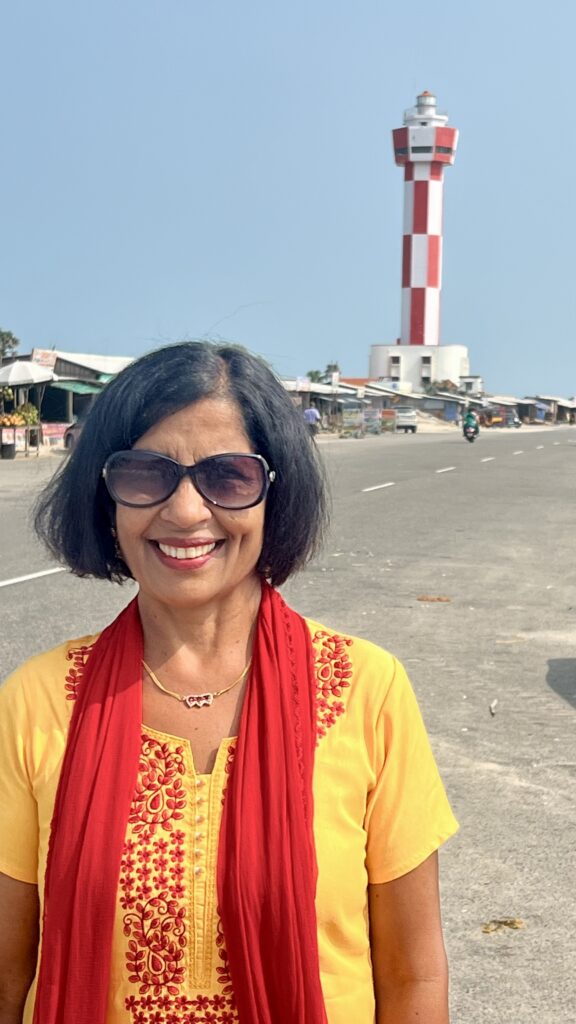
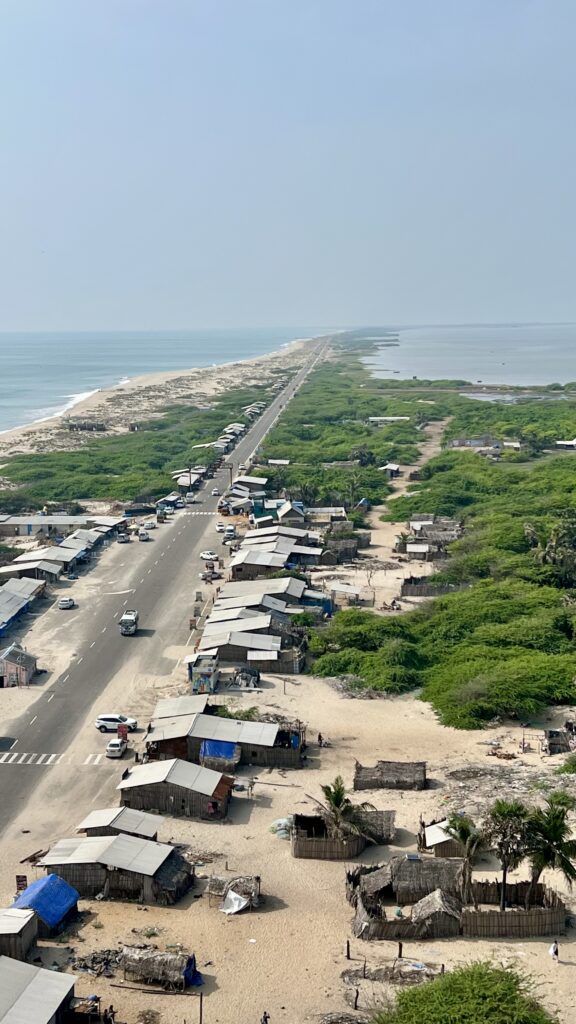
We reached Danushkodi in the afternoon after 1 pm, and it was crowded, hot and humid. You cannot get a picture without people coming in the way. The scenery around this place is drop dead gorgeous. We were at the edge of India where the Indian Ocean and the Bay of Bengal meet and the water around was out of this world.
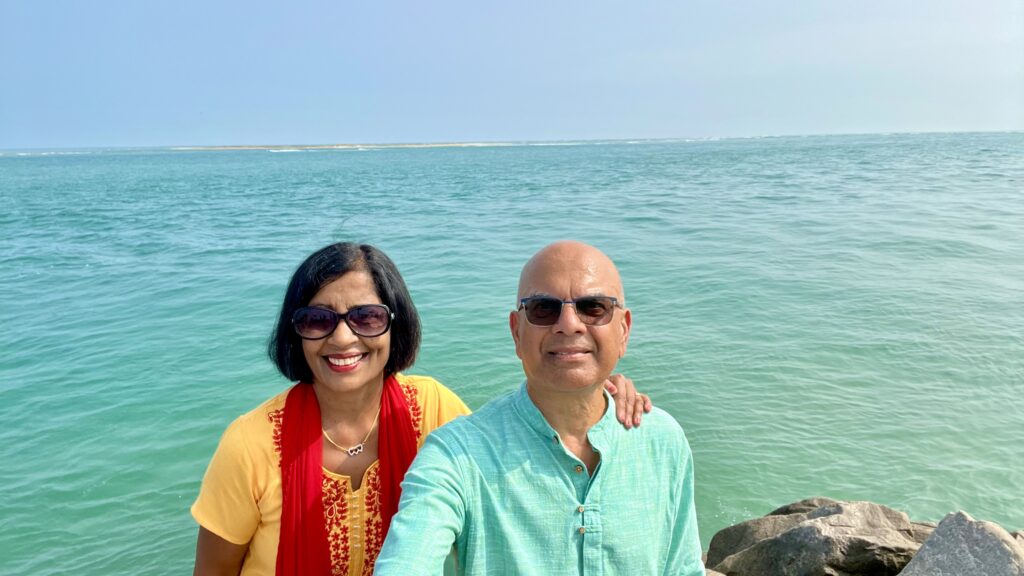
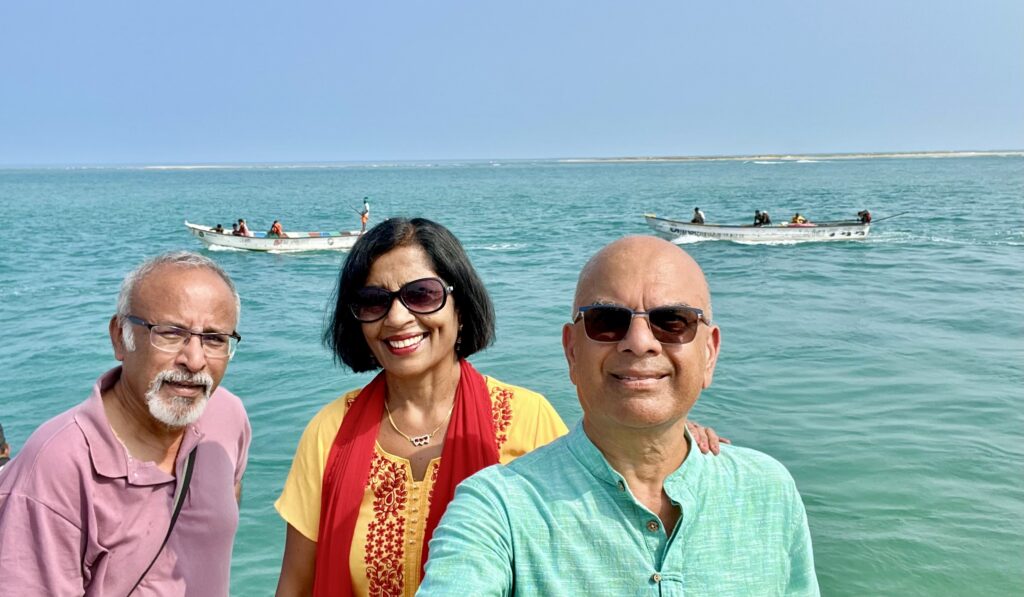
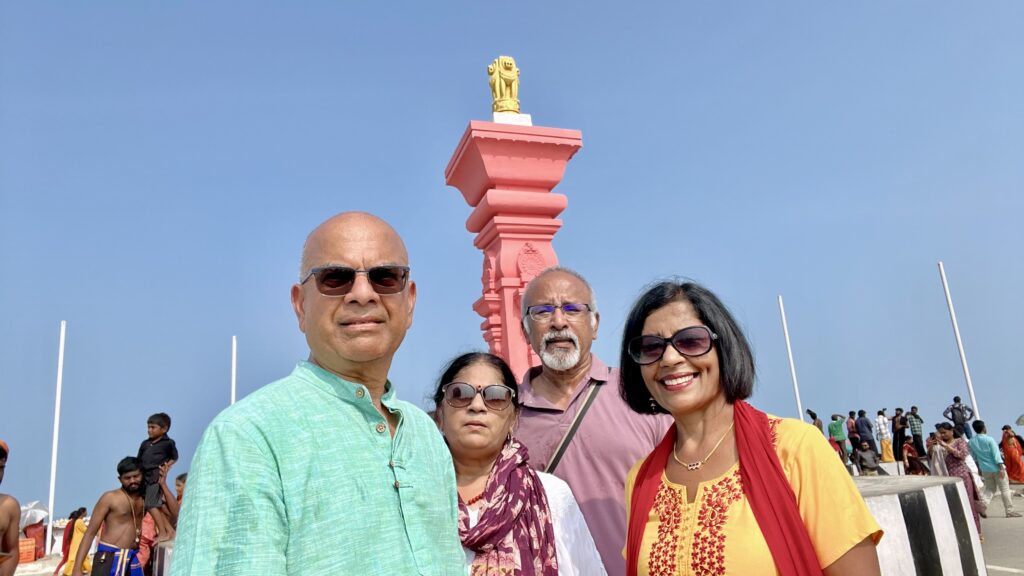
Abdul Kalam Memorial – Our next stop was to check out Dr Abdul Kalam’s museum which is free to visit. You have to remove your footwear and no cell phones or cameras allowed inside. As the name suggests, the memorial is dedicated to the former president Dr. Abdul Kalam and is located in Peikarumbu. The memorial was designed and constructed by the Defense Research and Development Organization (DRDO) as a tribute to Kalam and to display the cultural heritage and ethnic diversity of India. It was officially inaugurated on 22 July 2017.
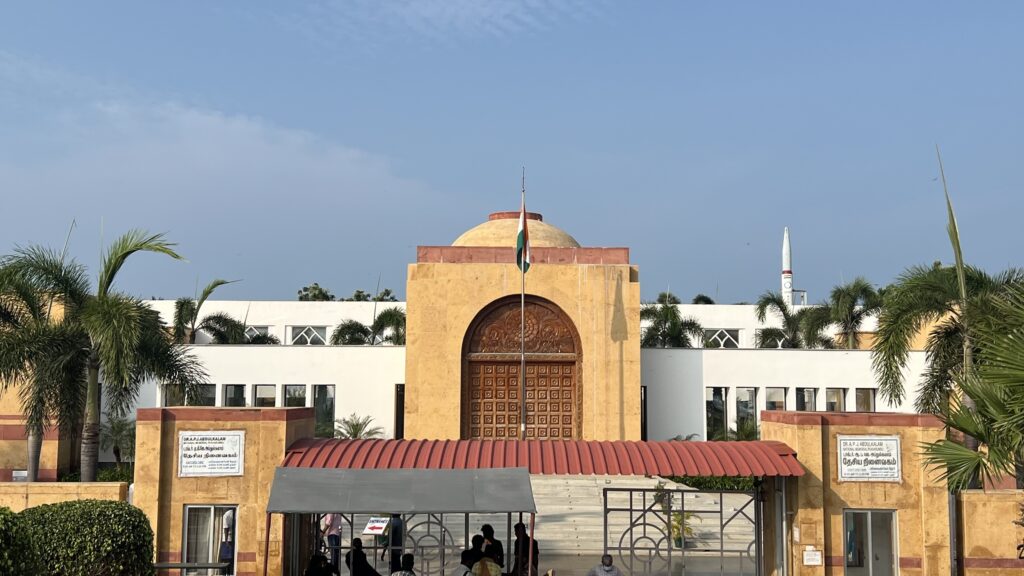
Old Pamban Bridge, New Pamban Bridge, and Annai Indira Gandhi Road Bridge – The Old Pamban Bridge was opened in February 1914 and carried rail traffic between Rameshwaram on Pamban Island and mainland India. it was India’s first sea bridge, and was the longest sea bridge in India until the opening of the Bandra-Worli Sea link (Mumbai) in 2010. The old Pamban bridge underwent several overhauls over the years to extend its lifespan. In December 2018, fissures developed on the bridge, which halted railway traffic. In December 2022, rail transportation on the old bridge was suspended permanently as the bascule section had weakened significantly due to corrosion.
The New Pamban Bridge is being constructed parallel to the old Pamban Bridge and spans a length of 2.07 km (1.29 mi) and includes a 72 m (236 ft) vertical lifting section. It is the first vertical lift sea bridge in India and is expected to be opened for traffic in 2025.
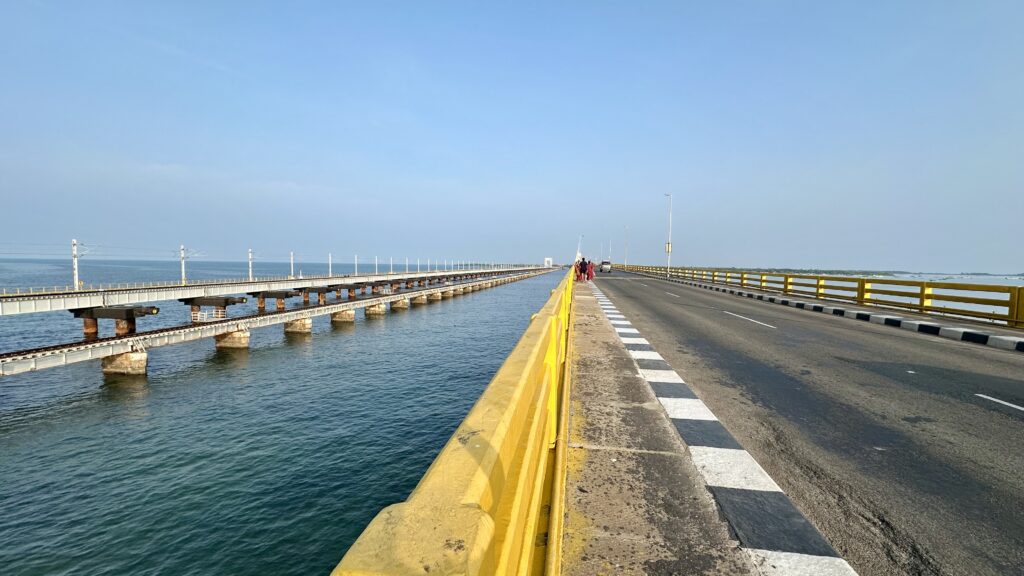
Annai Indira Gandhi Road Bridge is parallel to Pamban Railway Bridges. The Road Condition is very good and one can get a great view of the sea and the Pamban Railway Bridge (see above picture).
